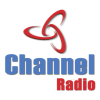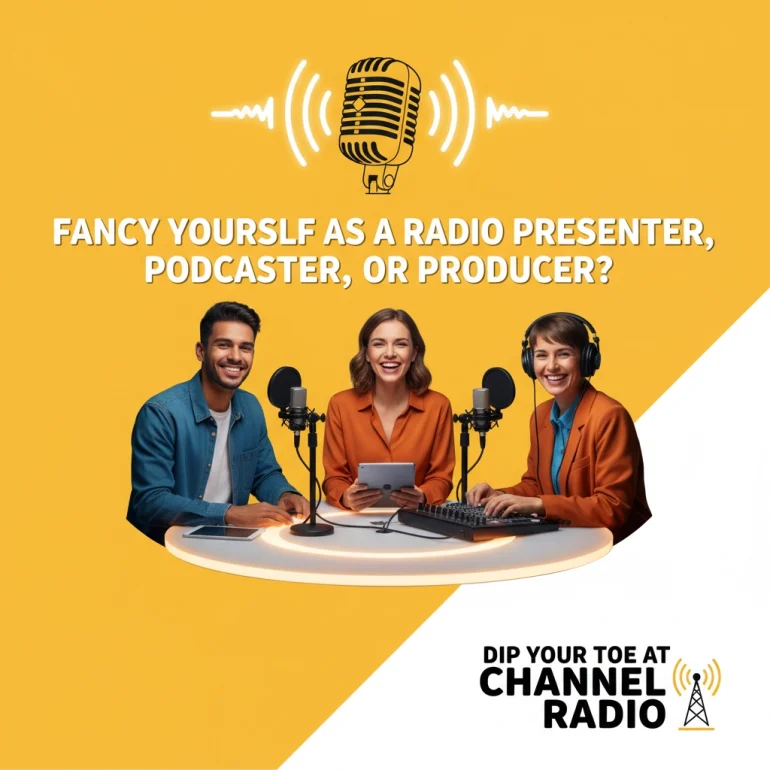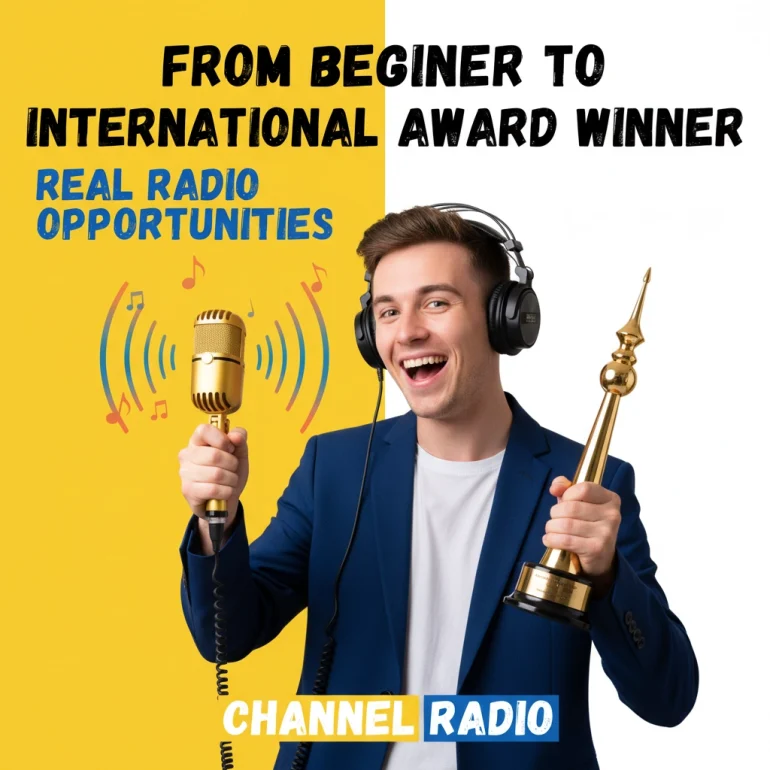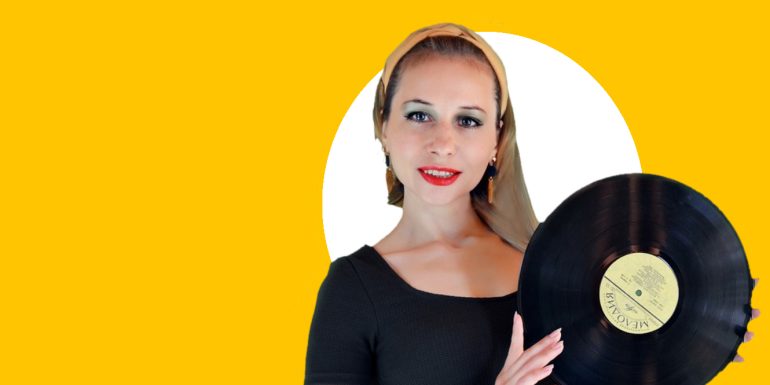-
 play_arrow
play_arrowChannel Player Channel Radio Web Player
Are Talk Radio Schedules Dead? How Channel Radio's Eclectic Mix Proves Otherwise
today12/10/2025 3
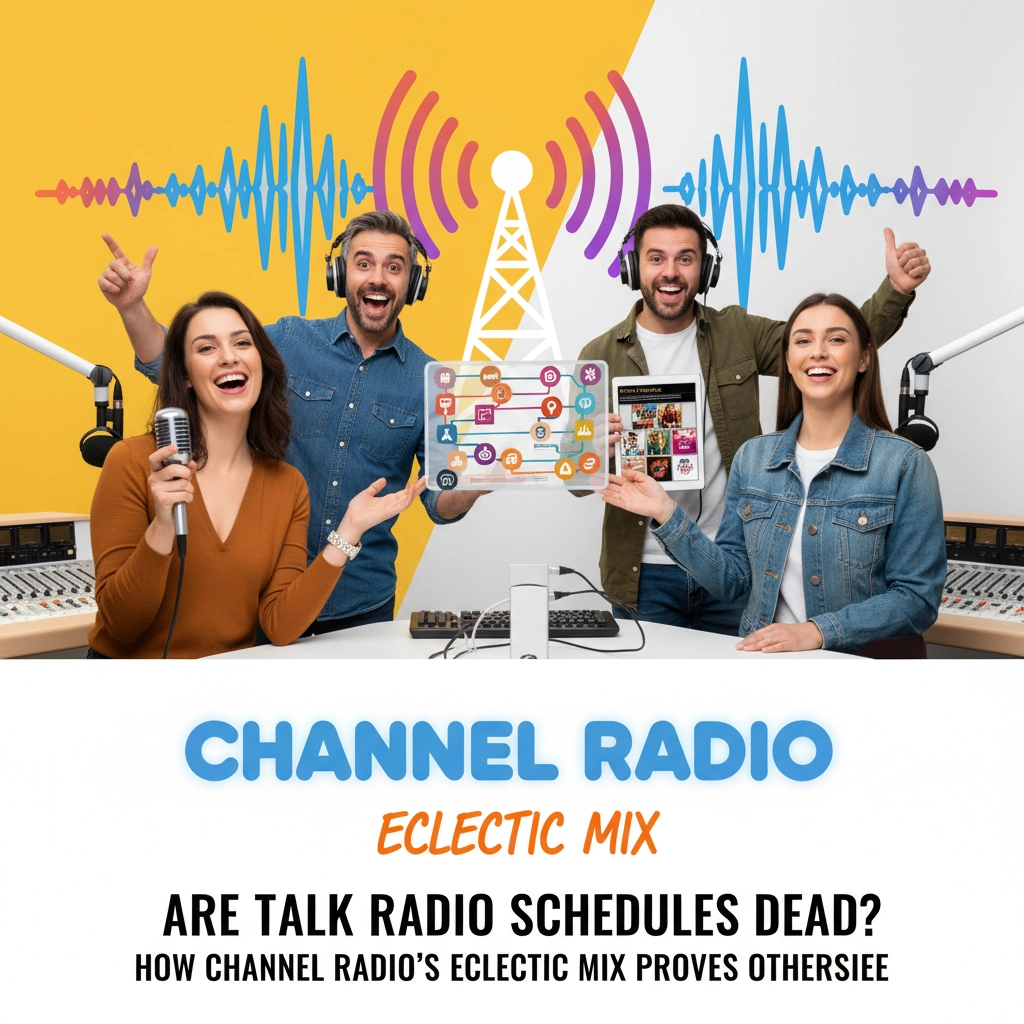
Talk radio schedules aren't dead, they're evolving, and if you're not paying attention, you're missing the biggest opportunity in audio broadcasting right now.
Let's face it: everyone's been predicting the death of traditional radio for years. Streaming killed the radio star, right? Wrong. While you've been worrying about Spotify and podcasts stealing your audience, something remarkable has been happening. Radio still commands 66% of all ad-supported audio listening time in 2025. That's not a dying medium, that's a dominant one.
But here's where most station managers get it completely wrong. They think survival means playing it safe, sticking to predictable playlists, and avoiding anything that might seem too "niche." That's exactly backwards. The stations thriving right now are the ones embracing eclectic programming, mixing talk with music, and creating schedules that actually give listeners something they can't get anywhere else.
The Numbers Don't Lie: Radio Is Still King
You want proof that scheduled programming works? Look at the data. Radio accounts for 73% of ad-supported audio time among listeners 35 and older, and even captures 47% of the coveted 18-34 demographic. If radio schedules were dead, these numbers would be in freefall. They're not.
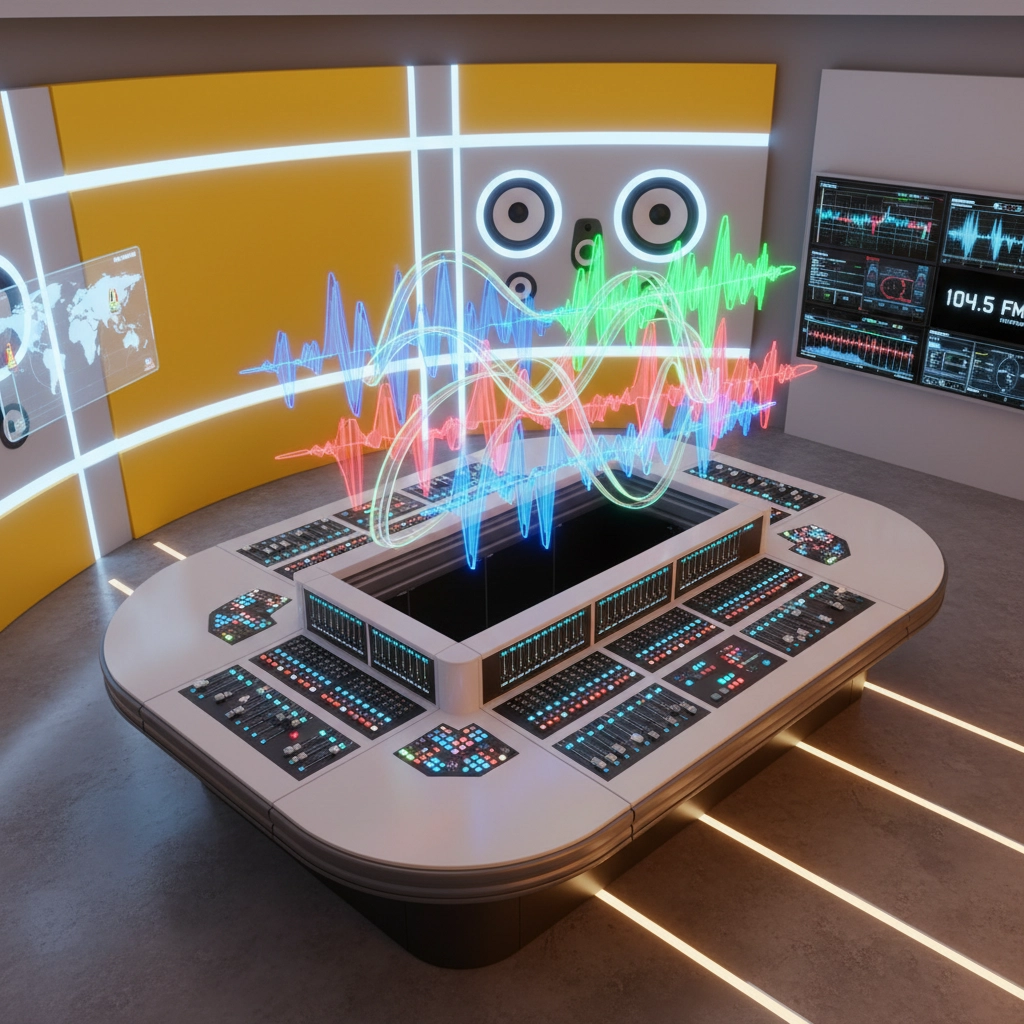
Spoken word content, that's talk radio to you and me, has grown 40% in the past seven years. While everyone else was chasing the streaming dragon, talk radio was quietly building one of the most engaged audiences in all of media. Your listeners aren't just background music consumers; they're actively choosing to spend their time with voices they trust and content that matters to them.
But here's the kicker: this isn't happening because of generic, one-size-fits-all programming. It's happening because of stations that dare to be different.
Why Eclectic Programming Is Your Secret Weapon
Niche stations are thriving while generic ones struggle. You know why? Because listeners are starving for authenticity in a world of algorithmic playlists and corporate cookie-cutter content.
Take KEXP in Seattle, they've built an estimated 180,000 weekly listeners with specialty shows that range from psychedelic music to African sounds to Latin alternative. Their YouTube channel? Over 3 million subscribers, with 75% of views coming from outside the United States. That's not niche programming limiting their reach, that's eclectic content expanding it globally.
Here's what you need to understand: when you try to please everyone, you end up pleasing no one. But when you create passionate, authentic content that serves specific interests throughout your schedule, you build something far more valuable than a large audience, you build a loyal one.
The Local Comeback Is Real (And You'd Better Be Part of It)
Local radio is making the biggest comeback in decades, and if you're not positioned for it, you're going to watch your competitors steal your market share.
Your listeners aren't just looking for music they can get on Spotify, they want connection. They want real-time information about their community. They want voices they recognize talking about local events, weather that actually affects their commute, and news that impacts their neighborhood. This is where eclectic scheduling becomes your competitive advantage.
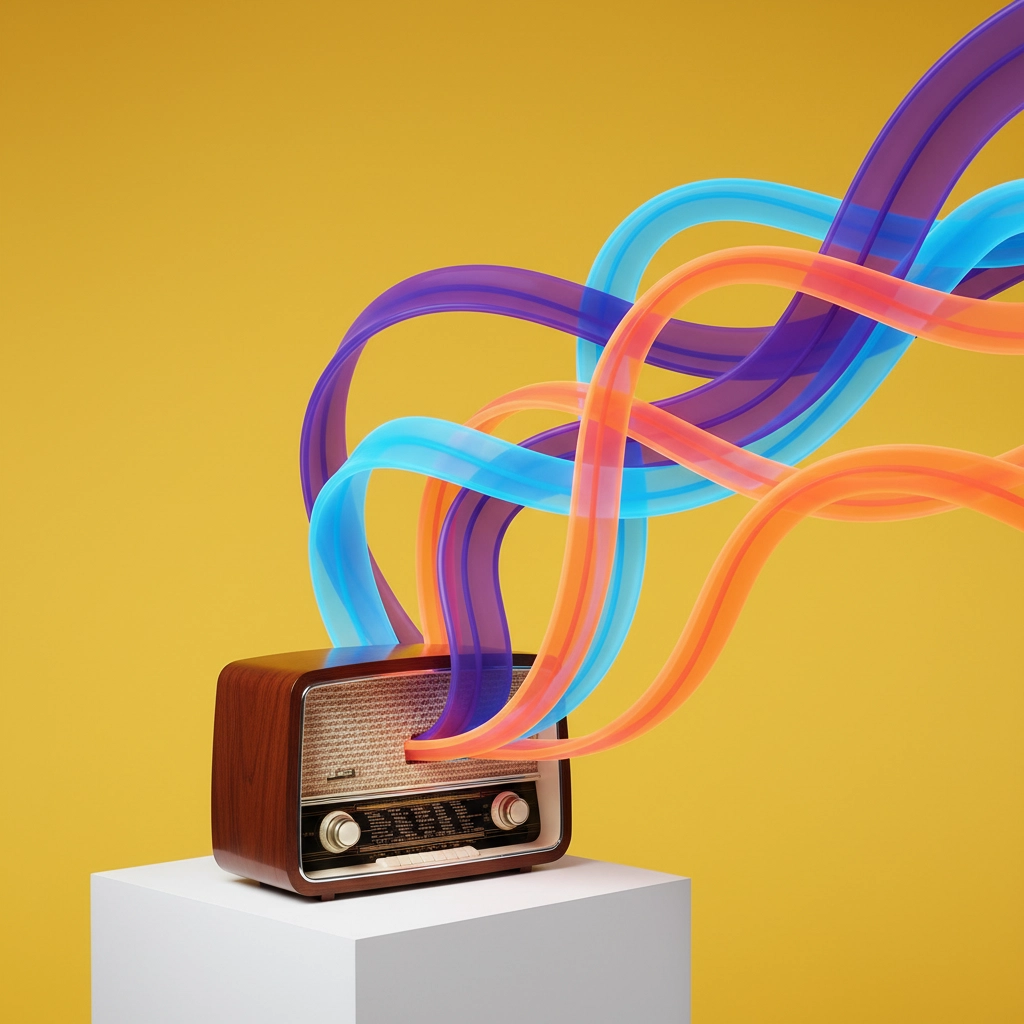
Think about it: when was the last time Spotify told your listeners about the local folk festival happening next weekend? When did Apple Music warn them about construction on their route to work? Never. But your schedule can, and should, weave these local touchpoints throughout your programming day.
How Channel Radio Proves Eclectic Scheduling Works
Here at Channel Radio, we're living proof that diverse programming schedules not only work, they're essential. Our talk shows blend seamlessly with our folk music programming, creating an experience that keeps listeners engaged across different dayparts.
Don't get me wrong, this wasn't easy to figure out. When we first started mixing genres and talk formats, some people thought we were crazy. But here's what we discovered: listeners don't want to be pigeonholed any more than we do. The same person who loves traditional folk music at noon might want thoughtful conversation about local issues at three o'clock.
Our eclectic approach means we're not competing with streaming services, we're offering something they fundamentally can't. We provide curation, local relevance, and the kind of spontaneous human connection that algorithms will never replicate.
The Fatal Mistake Most Stations Make
If you're programming your station like it's 1995, nothing serious will ever happen for your listener engagement. The biggest mistake we see stations making is treating their schedule like a rigid set of silos. Music here, talk there, never the two shall meet.
That's not how real people consume media anymore. Your listeners are used to bouncing between a true crime podcast, their favorite playlist, and a live stream of their local town council meeting, all in the same hour. Why would you force them to change stations when you could give them that variety in one place?
Here's the truth that's hard to swallow: predictable programming is comfortable for you, but boring for your audience. If they can predict exactly what you're going to play at any given time, why wouldn't they just create their own playlist instead?
Building Your Own Eclectic Schedule: The Step-by-Step Approach
Ready to stop playing it safe and start building something that actually engages listeners? Here's how you do it:
Map your audience's actual day, not your assumptions about it. When are they commuting? Working? Relaxing? Your schedule should serve their real rhythms, not some theoretical radio textbook.
Identify the gaps in your market. What conversations aren't happening on other stations? What music isn't getting played? Those gaps are your opportunities.
Create bridges between your different content types. Don't just slam from folk music into talk radio, use your personality and local knowledge to make those transitions feel natural and planned.
Test and measure everything. Your spiritual programming might work better at different times than you think. Data should drive decisions, not habits.
Build relationships with local voices and musicians. Your schedule becomes exponentially more valuable when it features people your listeners might actually encounter in their community.
The Streaming Myth You Need to Stop Believing
Streaming hasn't killed radio scheduling, it's made it more important. Yes, fewer people are scanning FM or using preset buttons, but that doesn't mean they don't want curated, scheduled content. It means they want that content available when and how they choose to consume it.
KEXP's success proves this point perfectly. Their weekday schedule: morning show from 7-10 AM, midday programming from 10 AM-1 PM, drive time from 4-7 PM: still structures their audience's listening habits even when accessed through apps and smart speakers. The schedule isn't the problem; bad scheduling is the problem.
Your Next Move (Because Waiting Won't Work)
The window for building an engaged, loyal audience through eclectic programming is open right now, but it won't stay that way forever. While your competitors are still trying to figure out whether they should add a podcast or stick to music-only formats, you have the opportunity to create something genuinely different.
Focus on building bridges between content types. Start conversations that matter to your community. Mix your musical programming with the kind of thoughtful talk content that gives your listeners reasons to stay tuned beyond individual songs.
And remember: your audience wants to be surprised, educated, and entertained: often in the same hour. Stop limiting yourself to one-dimensional programming. The future of radio belongs to stations brave enough to be authentically eclectic, locally relevant, and personally engaging.
The question isn't whether talk radio schedules are dead. The question is whether you're ready to prove they're more alive than ever.
Written by: Terry Jones
Similar posts

60s Hour on Channel Radio
Presented by Channel Music Team
One full hour dedicated to the 60s with no interruptions.
closeTop popular
